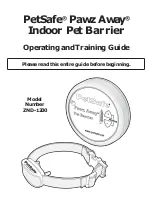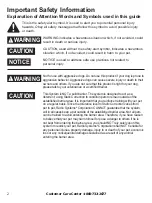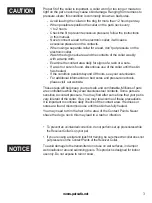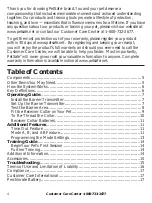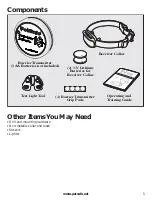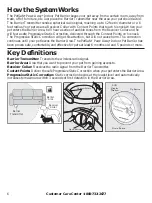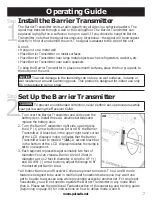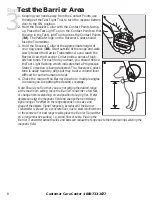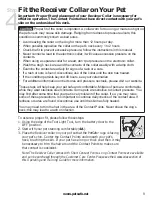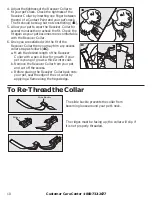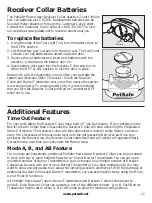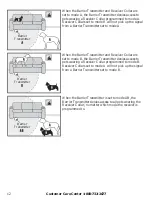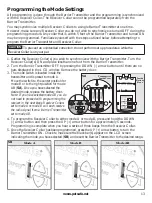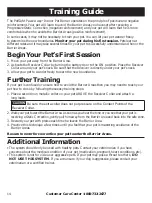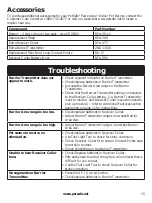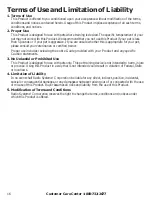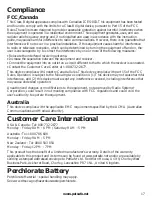
www.petsafe.net 11
Receiver Collar Batteries
The PetSafe
®
Pawz Away
®
Receiver Collar uses two 3-volt Lithium
coin cell batteries, size CR2032. Replacement batteries can be
found at many retailers or through the Customer Care Center.
Contact the Customer Care Center at 1-800-732-2677 or visit
our website at www.petsafe.net to locate a retailer near you.
To replace the batteries:
Using the edge of the Test Light Tool, turn the battery door to
1.
the OPEN position.
Lift the battery door out and turn the door over. The two 3-volt
2.
Lithium coin cell batteries are stored inside the door.
Remove the old batteries and insert new batteries with the
3.
positive (+) side facing the battery door lid.
Insert battery door back into the Receiver Collar and turn to
4.
either the OFF or ON position to lock the door in place.
Battery life will vary depending on how often your pet tests the
system and receives a Static Correction. Check the Receiver
Collar and Barrier Transmitter every month to ensure the system
is working properly. To prolong battery life, it is recommended
that you turn the Receiver Collar and Barrier Transmitter OFF
when not in use.
ON
OFF
OPE
N
ON
OFF
O
PE
N
Open
Battery
Additional Features
Time Out Feature
For your pet’s safety, the Receiver Collar has a built in Time Out feature. If your pet stays in the
Barrier Area for longer than 15 seconds the Receiver Collar will stop delivering the Progressive
Static Correction. The Receiver Collar will then administer a random single Static Correction
every 5 to 10 seconds at the maximum level until the pet leaves the Barrier Area. Once your
pet leaves the Barrier Area, the Receiver Collar resets itself and will deliver a Progressive Static
Correction the next time your pet enters the Barrier Area.
Mode A, B, and AB Feature
For multiple pet households, additional PetSafe
®
Pawz Away
®
Receiver Collars can be purchased
to work with one or more PetSafe
®
Pawz Away
®
Indoor Barrier Transmitters. You can set up an
unlimited number of Barrier Transmitters in your home and an unlimited number of Receiver
Collars can be used with one or more Barrier Transmitters. If you have multiple pets, you may
want to allow one pet access to an area while denying access to another pet. With the purchase of
additional Receiver Collars and Barrier Transmitters, you can accomplish this by using the Mode
A and Mode B functions.
All PetSafe
®
Pawz Away
®
Indoor Barrier Transmitters and Receiver Collars come preset to
mode A. Each Receiver Collar can operate in one of two different modes—A or B. Each Barrier
Transmitter may be set to either A, B or AB mode to allow for multiple confi gurations.
Summary of Contents for Pawz Away ZND-1200
Page 18: ...18 Customer Care Center 1 800 732 2677 ...
Page 19: ...www petsafe net 19 ...

